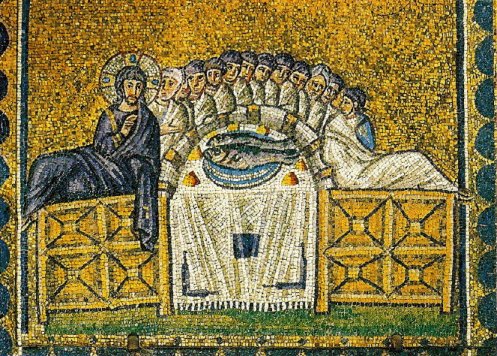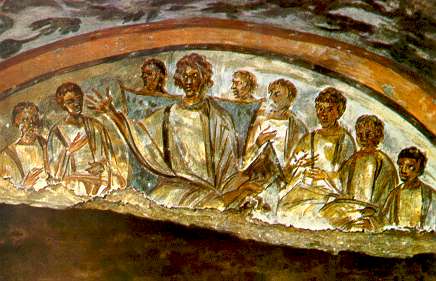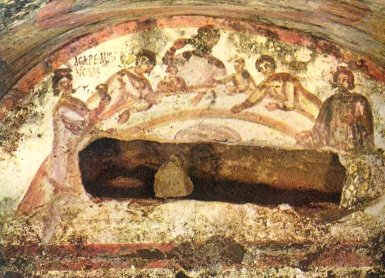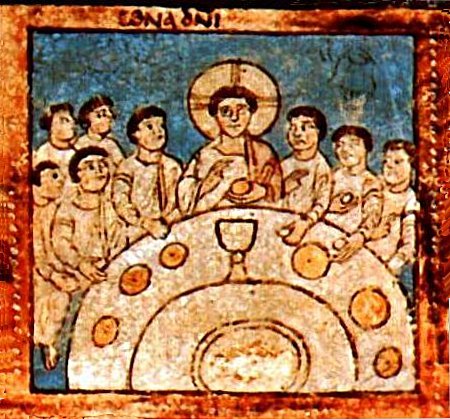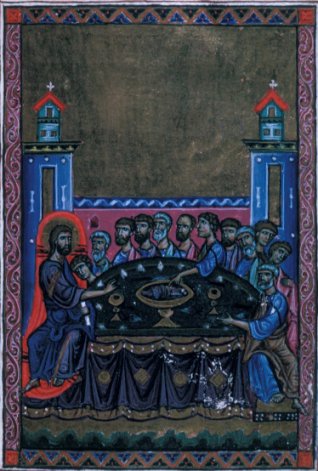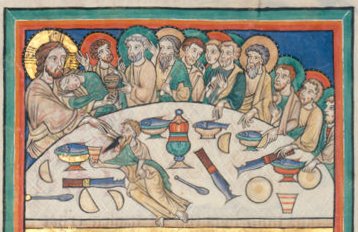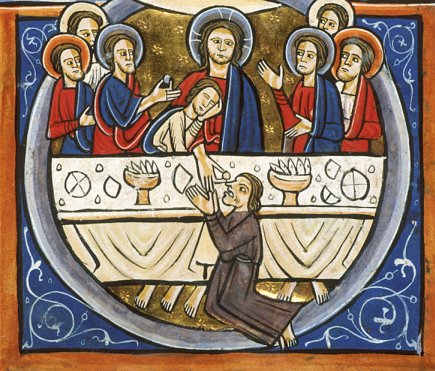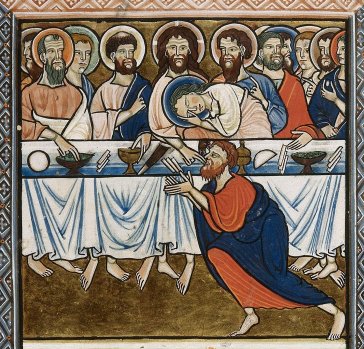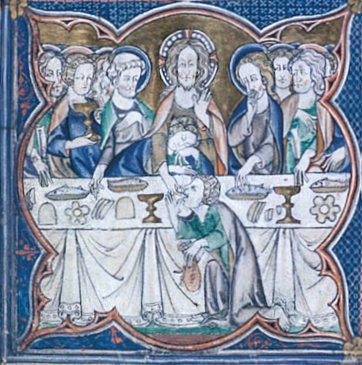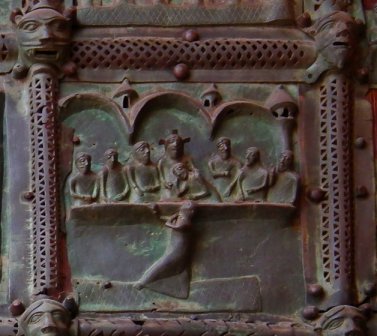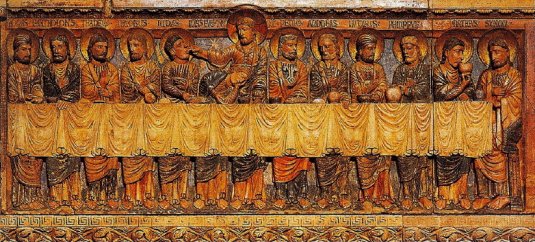|
The Passion of Christ |
|
|
The Last Supper - 2 |
|
|
Early images In Leonardo Da Vinci, The Last Supper: A Cosmic Drama and an Act of Redemption, Michael Ladwein claims that the earliest existing image of the Last Supper is the 6th century mosaic in Sant' Apollinaire Nuovo In Ravenna, below. Robin Margaret Jensen in Understanding Early Christian Art doesn't agree; the image on the left below is from the Catacombs of Domitilla in Rome and dates from the second century. Images of feasts, both pagan and Christian, are often found in catacombs and on sarcophagi, and some show the very early Christian tradition of 'Love feasts' or agape meals. (below right.) The Domitilla image is certainly drawn from these earlier images, and Ladwein claims that the very early Christians took care to avoid direct representations of Christian ritual. On balance I think I'm with Jensen; the central figure looks as if it is Christ, which would identify the image as a Last Supper. The Ravenna image is a fascinating image all the same. The meal consists of fish, an ancient Christian symbol, rather than a sacrificial lamb. In another way, however, the image is possibly more authentic than all later ones. Christ and the disciples are lying back on couches in true Roman manner, not sitting in chairs round a table. Christ is shown here as bearded; it has been suggested that this is down to the Arian origins of the mosaic. Images of Christ before the passion in this church show him young and beardless. In the Arian tradition, Christ was essentially human and thus grew old like everyone else. |
|
|
|
|
|
|
|
|
The theme did not disappear. Between the Sant'Apollinaire mosaic and the depiction of the scene in Medieval painting it could be found in manuscript illumination and in carving. There are a number of examples, including some of great beauty. The oldest known example comes from The Augustine Gospels: I've written about this elsewhere on this site so follow the link if you would like to know more. Augustine brought the book from Rome to Canterbury in 597, so in age it is up there with the Ravenna mosaic. Notice that, like the Domitilla fresco, it only has room for eight disciples; could the old Roman style have influenced this? Another point to note is the clear reference to the Eucharist. |
|
|
|
|
|
|
|
|
|
|
|
|
|
|
It is interesting that all of the psalters above illustrate these two verses from John: 'He then lying on Jesus' breast saith unto him, Lord, who is it? Jesus answered, He it is, to whom I shall give a sop, when I have dipped it. And when he had dipped the sop, he gave it to Judas Iscariot, the son of Simon. (Ch13 v 25-26)
Finally an early casting and a carving, both showing the same scene: |
|
|
|
|
